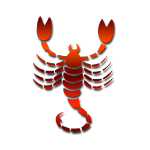Paid Services
Elements of Predictive Astrology
Author: SN Rao | Last Updated: Mon 14 Mar 2011 6:39:12 PM
By S N Rao
The use of astrology is to foresee future events, trends, and developments. Prediction was most likely the original purpose of astrology, and it remains the most popular usage today.
The natal chart is a static description of the native’s character, i.e., the sum total of his potential needs, feelings, thoughts, and behavioral traits as they are given at birth. It is the blueprint for one’s life.
Prediction through Vedic astrology is carried out by Dasha systems, varga charts, gochara etc. Here I would like to highlight the simple predictive methods which are carried out in Western astrology which are equally accurate.
Both the actual movements of the planets and calculated points (similar to sahams in vedic astrology) and their symbolic movements are seen to reveal the changes which are physical and mental in nature. The actual movements of planets and points are called transits. Predictions are also based on the symbolic movements of the planets and points following birth. These symbolic movements fall into one or two categories. Progressions and Directions.
Extending the natal chart by means of transits, progressions, and directions allow astrologers to forecast or time the coming of opportunities, challenges, crises, like personal, professional, financial, career, social, romantic, emotional, or spiritual and obstacles in any area of life. During the not-so-pleasant times, the horoscope can be used to clarify the issues, lessons can be learned and the duration of such periods. Armed with such foreknowledge, one is more capable of moving with his own cycles of opportunity. Consulting one’s natal chart will not change the opportunities and challenges, neither will it change the destiny, but it will enable one to respond to them in ways that will affect the outcomes favorably. In times of crisis this foreknowledge serves as both a source of inspiration and as a guide for proper preparation and action.
Transits
Let’s consider transits first as they are the simplest to calculate and the simplest to understand. Transits are the day-by-day, positions of the planets and points. These are compared to the positions of the planets and points in the natal chart. Whenever a transiting planet or point forms an aspect to a natal planet or point, it indicates a change in the phase of the relationship between the transiting body and the natal body. We tend to become conscious of these phase changes and recognize them as events. Astrologers often refer to such changes as transiting aspects or more commonly and simply as transits.Transits are interpreted according to the nature of the aspect, the two bodies involved, the signs and houses they occupy, their relationship in the natal chart as well as with progressed and directed bodies. If more than two planets are involved or two or more transits are occurring close in time, it is very likely that a significant or major event is indicated. A significant event may also be indicated if one or more of the planets are especially sensitive or emphasized in the natal chart. Transiting planets are also interpreted in relation to the natal house they are transiting. As a planet transits a natal house, it stimulates the department of life symbolized by the house according to the nature of the transiting planet. Transiting planets form new aspects to one another as they move through the sky. These are referred from the Sun’s birth position and used as the basis for general sun sign predictions. However, in natal astrology they are not significant unless they aspect natal, progressed, or directed planets and points.
Progressions
Like transits, progressions are based on the actual postnatal movement of the planets. However, the time frame of the actual movements is symbolically transformed. Progressions are based on the principle that a certain period of time or cycle in the life of an individual is equal to some other period of time or cycle. Various progressions are used – like Radix, Naibod etc. Secondary method which is the most popular technique of progression uses the principle of one day equals one year. The movements of the planets and points during the period of one day symbolize their movements during one year.For example, the movements of the planets on the first day following birth correspond to or symbolize their movements during the first year of life. The movements of the planets on the 30th day after birth symbolize their movements during the 30th year of life. This scale of one-day-equals-one year is technically referred as secondary progressions, but in practice they are usually called progressions. The positions of the progression’s planet are compared to the positions in the natal chart in a manner similar to the transits and the natal chart.
Eg. twenty days after birth the planet Venus has actually moved to the position that the Sun occupied at birth. Using the day-equals-a-year formula, we would say that progressed Venus has conjoined or formed a conjunction to the natal Sun at the age of twenty-years-old. The event would be triggered according to the nature Venus and Sun would signify in the birth chart.
If 50 days after birth Mars formed a square to the position occupied Saturn at birth, we would say that progressed Mars squared natal Saturn at the age of fifty-years-old. The difficult aspect between Mars and Saturn would trigger a difficult period to the native in the 50th year of his life. In addition to the aspects that progressed bodies make to natal positions, the progressed bodies are also forming new aspects to one another. Unlike transit-to-transit aspects, progressed-to-progressed aspects are given importance because they are considered to be the extensions of the natal chart. Progressed-to-progressed aspects are interpreted in combination with the natal chart and along with transit used for predicting the future.
Directions
Unlike transits and progressions, directions are based solely on symbolic movement. With directions, the unit of the shorter cycle is added to the natal position. The new position is the directed position. Unlike progressions in which each planet progresses according to its own speed, the same unit is added to all planets and points. All planets and points are moved or directed the same distance. Two types of Directions are commonly used - Primary direction and Secondary direction.For example, when working with solar arc directions, the average daily movement of the Sun is added to all the planets and points. The movements arrived at by adding of one degree of solar arc symbolizes the movements of the planets and points during the first year of life. Adding the solar arc to all the planets and points thirty times symbolizes their movement during the thirtieth year of life. Their movements are said to be directed. If, by adding the solar arc to Venus twenty times, Venus occupies the position of the Sun at birth, the directed Venus conjoins or forms a conjunction to the natal Sun.
Due to the exhaustive calculations involved in understanding the primary directions, most astrologers tend to avoid them. In predictive astrology most Western astrologers use more than one method of prediction. The combination of transits with secondary progressions or secondary directions seems to be the most popular.
To consult astrologer S.N. Rao, please click here - Horoscope Reading by S.N. Rao.
 Best quality gemstones with assurance of AstroCAMP.com More
Best quality gemstones with assurance of AstroCAMP.com More
 Take advantage of Yantra with assurance of AstroCAMP.com More
Take advantage of Yantra with assurance of AstroCAMP.com More
 Yantra to pacify planets and have a happy life .. get from AstroCAMP.com More
Yantra to pacify planets and have a happy life .. get from AstroCAMP.com More
 Best quality Rudraksh with assurance of AstroCAMP.com More
Best quality Rudraksh with assurance of AstroCAMP.com More
Get your personalised horoscope based on your sign.



















